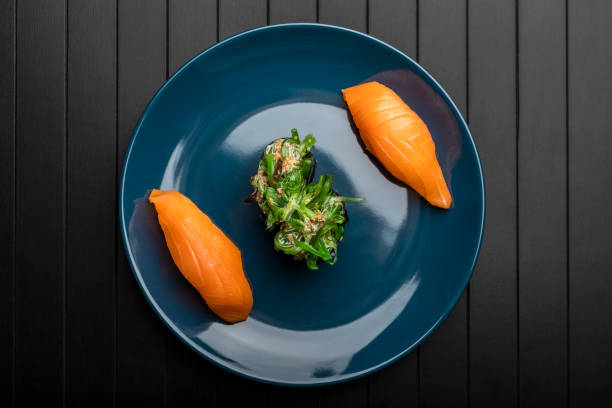Iodine is an important trace element for our body. However, iodine is contained in relatively few foods. If these are consumed rarely or not at all, it can lead to an iodine deficiency and even to a disruption of thyroid function. EAT SMARTER shows you which foods you should eat to prevent iodine deficiency.
Iodine is important for the body. It is essential for the function of the thyroid gland and, among other things, is responsible for the energy turnover in the body. The German Nutrition Society recommends a daily intake of 200 micrograms for adults. In pregnant and breastfeeding women it is even up to 260 micrograms per day.
1. Sea Fish
Fish such as plaice, cod, mackerel, or pollock are rich in iodine. A portion of 100-200 grams can already cover the daily requirement of an adult (200 micrograms). Therefore sea fish should be on your menu once or twice a week. River fish such as trout or carp are also healthy, but low in iodine.
For example, try our pollock with dill potatoes or the plaice with herb coating and be inspired by many other delicious fish recipes.
2. Algae

Algae are an ideal source of iodine without fish or meat, especially for vegetarians and vegans. On average, aquatic plants contain 10 milligrams of iodine per 100 grams. They also provide many proteins, minerals, and vitamin B12, which is particularly important for vegans.
In this respect, you often eat sushi and spice up soups, salads, vegetables, or omelets as well as scrambled eggs with nori, wakame, or kombu seaweed.
3. Seafood
Mussels, oysters, lobster, or shrimp are similar to sea fish as a suitable source of iodine. They are also rich in protein and iron. Treat yourself to these foods and let our seafood recipes inspire you to come up with new variations.
4. Iodized salt
Many foods contain almost no iodine due to soil leaching. Therefore, the enrichment of table salt with iodine is very useful. Of course, the iodine intake should not come exclusively from salt and the recommended daily dose of 6 grams of salt should not be exceeded. However, use iodized table salt for the preparation of your food to support your intake.
5. Dairy products
Cheese, yogurt, and the like also contain iodine due to the enrichment of animal feed with trace elements. In addition, they provide proteins, especially in combination with cereals, for example in the form of bread or pasta. They also contain important minerals such as calcium and potassium as well as B and E vitamins. Dairy products are therefore particularly important, especially for children, and should not be missing from the menu.
6. Bread
Unfortunately, bread is not rich in iodine per se. However, it contains a relatively large amount of salt. When shopping, therefore, pay attention to the list of ingredients and give preference to bread and baked goods made with iodized table salt.
Tip: Simply bake your own bread – with iodized salt, of course. EAT SMARTER gives you tips for baking bread and shows you how you can easily make sourdough and yeast dough yourself.

7. Cold cuts
Similar to bread, sausage products such as salami, ham, and the like are not always rich in iodine, but they are also very salty. For these and other reasons, they should therefore only be eaten in small quantities. However, if you’re a fan of cold cuts, you’d rather go for those that are made with iodized salt and are as low in fat as possible.
